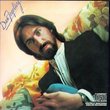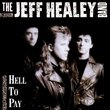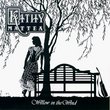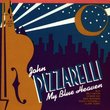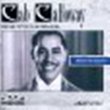| All Artists: Gioachino Rossini, Yoel Levi, Atlanta Symphony Orchestra, Christopher Rex, Christina Smith, Patrick McFarland Title: Rossini - Overtures / Atlanta Symphony Orchestra · Yoel Levi Members Wishing: 0 Total Copies: 0 Label: Telarc Release Date: 6/28/1994 Genre: Classical Styles: Forms & Genres, Theatrical, Incidental & Program Music Number of Discs: 1 SwapaCD Credits: 1 UPCs: 089408033421, 089408033421 |
Search - Gioachino Rossini, Yoel Levi, Atlanta Symphony Orchestra :: Rossini - Overtures / Atlanta Symphony Orchestra · Yoel Levi
 | Gioachino Rossini, Yoel Levi, Atlanta Symphony Orchestra Rossini - Overtures / Atlanta Symphony Orchestra · Yoel Levi Genre: Classical |
Larger Image |
CD DetailsSimilarly Requested CDs
|
CD ReviewsHard-Core Rossini Fan A. Lewis | Atlanta, GA United States | 02/29/2004 (5 out of 5 stars) "An Atlanta resident for almost 7 years and a former professional violist, I find the Atlanta Symphony to be one of the elite world-class orchestras. Their Rossini overtures appear on radio occasionally, and I have always been bowled over by the charming, very virtuoso interpretationsÑwhich is why, even though a symphony series subscriber, I just had to buy the recording. For example La Scala Seta starts incredibly fast yet stays amazingly soft. Conductor Yoel Levi brngs a fine musical mind and orchestral know-how to this superb orchestra." Seven Rossini Overtures Brett A. Kniess | Madison, WI | 01/27/2006 (4 out of 5 stars) "In textbooks, Gioacchino Rossini was a composer of the Romantic Era, but by all accounts, the majority of his music was composed in the Classical Era (his final opera, William Tell, was written in 1829) and Rossini retired without composing until his death in 1868. His music exhibits the light and balanced musical structure of the Classical Era, but his advanced orchestrations and harmonies show their roots in the Romantic Era, all evident in the seven popular opera overtures represented in this disk.
The 11-minute William Tell overture shows Rossini's mature and well-developed style. The broad strokes of awakening dawn into a wild thunderstorm, complete with small raindrops before the actual storm, is brilliant. The pastoral landscape smiles with the famous English horn solo, and the military homecoming is announced by the famous trumpet call. So many wonderful motives, orchestrated colorfully and with great variety. Also well-known, is the overture to the Thieving Magpie. Despite the serious plot, the music is lighthearted. The opening drum-roll suggests a military presence and goes right into a stuffy march, full of pompous grandeur. The second-half of the 9-minute overture moves at a swifter pace and the famous oboe solo almost sounds sneaky with its ambiguous staccato movement. The 7-minute overture to The Italian Girl in Algiers is also fairly well known, and one of Rossini's earlier overtures, showing some more formulaic classicism. The very easy-going, and quiet, harmonic sequence of the opening, along with a surprise loud chord, is evident of Classicism in Haydn's era. But the later fast section, heralds the more mature style of Rossini, with whirlwind woodwinds, a humorous piccolo melody, and various other delightful orchestral colorings. Also included is the famous Barber of Seville, the epitome of Rossini's mature style. Chock full o' catchy melodies, whimsical orchestral settings, and natural, dramatic build-ups, this 7-minute overture ranks as the best for good reason. Not so well known to the general public are the overtures to Semiramide, The Silken Ladder, and Tancredi. Perhaps it is because they are a bit more formulaic, but moreso, probably because they are not the showstoppers that the previously described overtures are. Semiramide, 11 minutes, opens with a gently lilting section for horns; eventually a martial and bubbly section enters with classical harmonic treatments and occasional Romantic suprises. The Silken Ladder may not overwhelm the listeners in decibels, but it certainly does in charm. After a slow wind-centered introduction, a romp with fluttering winds and an easy-sounding theme give the 6-minute overture grace and charm. In the same vein, the 6-minute Tancredi overture has a jumpy motive with accents in the winds. Despite popularity, it is Rossini who reinforced the "Italian" sound in the opera world, setting up the popularity of Verdi, a man who had such a deep respect for his older master Rossini. Yoel Levi and the Atlanta Symphony Orchestra provide a vivid and colorful portrayal of Rossini's overtures. This does not have the delicate lightness of a period or chamber performance, but that is OK if you are looking for a full Romantic sound quality. Levi gives a buoyant and bubbling modern sound that is full and fun, never unduly heavy or plodding, and certainly not out of perspective. This is certainly a demonstration class CD, one that hits the ball right down the middle of the road; not too fast and not too slow. Every voice of the orchestra is extremely clear, and the Telarc sound is spacious, giving the ensemble presence. The playing time is a little slim and could have included one or two more overtures, but this is a prime Rossini performance." |


